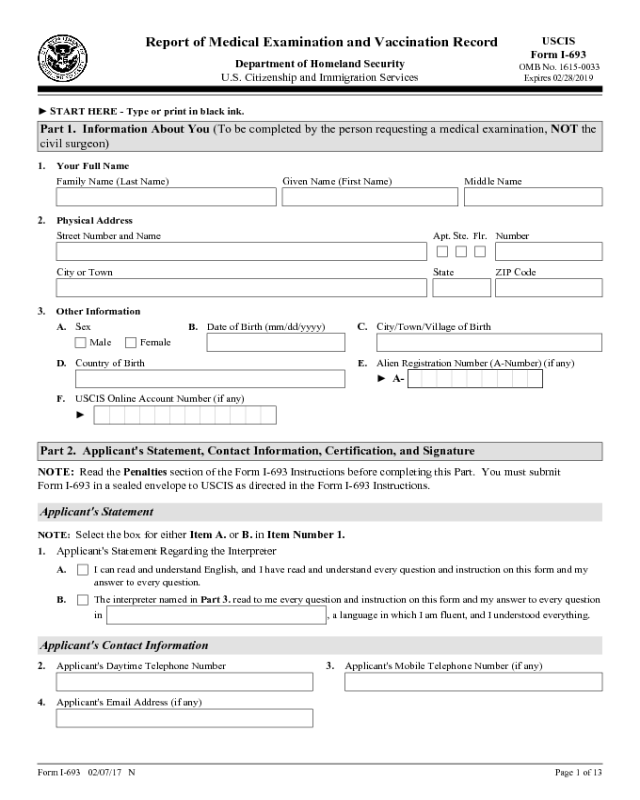
Form I-693 02/07/17 N Page 9 of 13
Family Name (Last Name) Given Name (First Name) Middle Name
►
A-
A-Number (if any)
Remarks: (Include any therapy given, rehabilitation, counseling or referrals. If you need extra space to complete this
section, use the space provided in Part 10. Additional Information.
B.
4. Other Medical Conditions (List any other Class B conditions, such as hypertension or diabetes.)
5. Required Referral to Health Department or Other Doctor (To be completed by civil surgeon, if a referral is medically
required. Do not complete if a referral is not required, such as recommended referral for LTBI treatment.)
Type or Print Name of Doctor or Health Department Receiving Required ReferralA.
(1)
(2)
(3)
Substance (Drug) Abuse in Full Remission, Listed in section 202 of the Controlled Substances Act, Class B
(5) Substance (Drug) Addiction in Full Remission, Listed in section 202 of the Controlled Substances Act, Class B
(4)
No Class A or B Substance (Drug) Abuse/Addiction
Substance (Drug) Abuse, Listed in section 202 of the Controlled Substances Act, Class A
Substance (Drug) Addiction, Listed in section 202 of the Controlled Substances Act, Class A
Findings:A.
Part 7. Civil Surgeon Worksheet (continued)
The U.S. Department of Health and Human Services (DHHS) sets the medical guidelines for determining drug abuse and drug
addiction. The terms are defined at 42 CFR 34.2(h) and (i).
Include here any diagnosis of drug abuse or drug addiction.
"Drug abuse" is "current substance use disorder or substance-induced disorder, mild,” but only with respect to substances listed
in Schedule I, II, III, IV, or V of section 202 of the Controlled Substances Act. Make the diagnosis according to the diagnostic
criteria in the most current edition of the DSM, or by another authoritative source as determined by the director of the CDC.
"Drug addiction" is "current substance use disorder or substance-induced disorder, moderate or severe," but only with respect to
substances listed in Schedule I, II, III, IV, or V of section 202 of the Controlled Substances Act. Make the diagnosis according to
the diagnostic criteria in the most current edition of the DSM.
Drug Abuse/ Drug Addiction3.
You may also make a diagnosis of full remission, according to the diagnostic criteria in the most current edition of the DSM or
another authoritative source as determined by the director of the CDC. See the CDC's Technical Instructions for more information.
B. Remarks: (Include diagnosis, likelihood of recurrence of the harmful behavior, therapy given, and any counseling or
referrals. If you need extra space to complete this section, use the space provided in Part 10. Additional Information.















